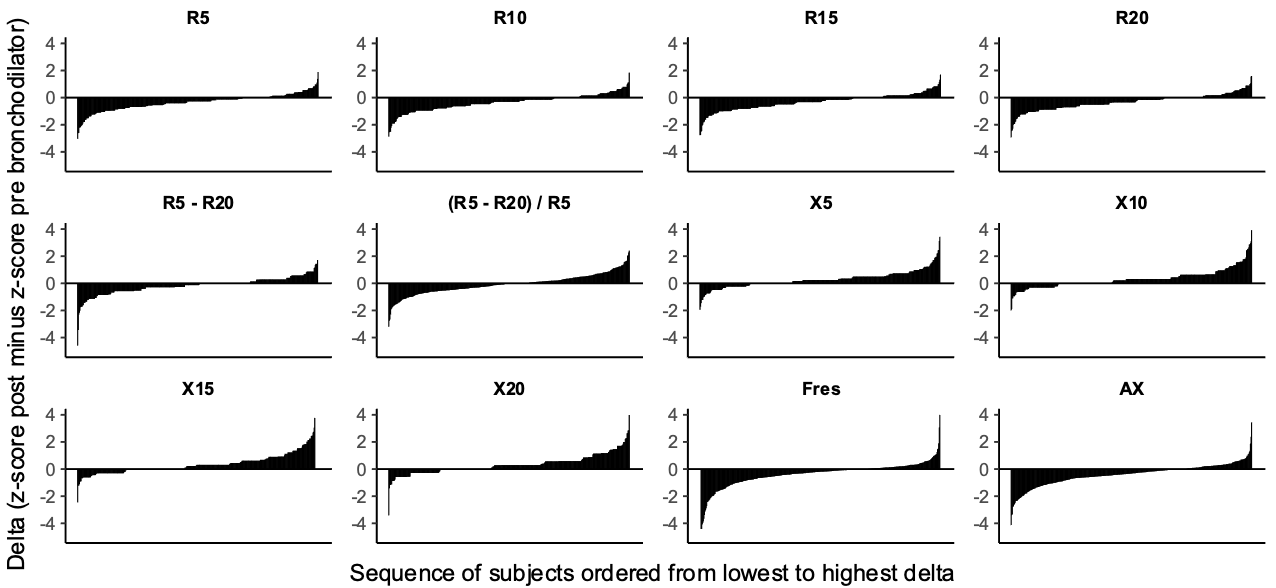Abstract
A crucial use of oscillometry is evaluation of the response to a short-acting bronchodilator (BDR). The last technical oscillometry recommendations highlight the necessity to obtain reference values of BDR in a healthy population, including the upper or lower limits of normal (ULN or LLN). Aim: To describe the BDR in all oscillometry variables. Methods: Healthy respiratory children and adults were recruited. After signing an informed consent, oscillometry were performed before (pre) and after (post) inhalation of 400 µg salbutamol according to international standards. BDR was calculated in four ways: A) [post minus pre]/predicted; B) [post minus pre]/pre; C) post minus pre, and D) z-score post minus z-score pre. Results: 434 subjects, 5-93 years, 54% female, were included. Formulas A and B yielded many indeterminate or inflated BDR, specially in reactances, due to values close to zero. Formula C is feasible but does not adjust by the basal status. Thus, we used z-scores (formula D) to calculate ULN and LLN for each variable. However, it was evident that BDR is a continuum, ranging from subjects who have better lung function after salbutamol to those in whom lung function worsens (figure). Thus, cut off values for ULN and LLN seem arbitrary and do not reflect the continuum of BDR. Conclusion: The calculation of reference values for BDR using z-scores seems to be appropriate, but its report in an ?all or none? fashion should be avoided.